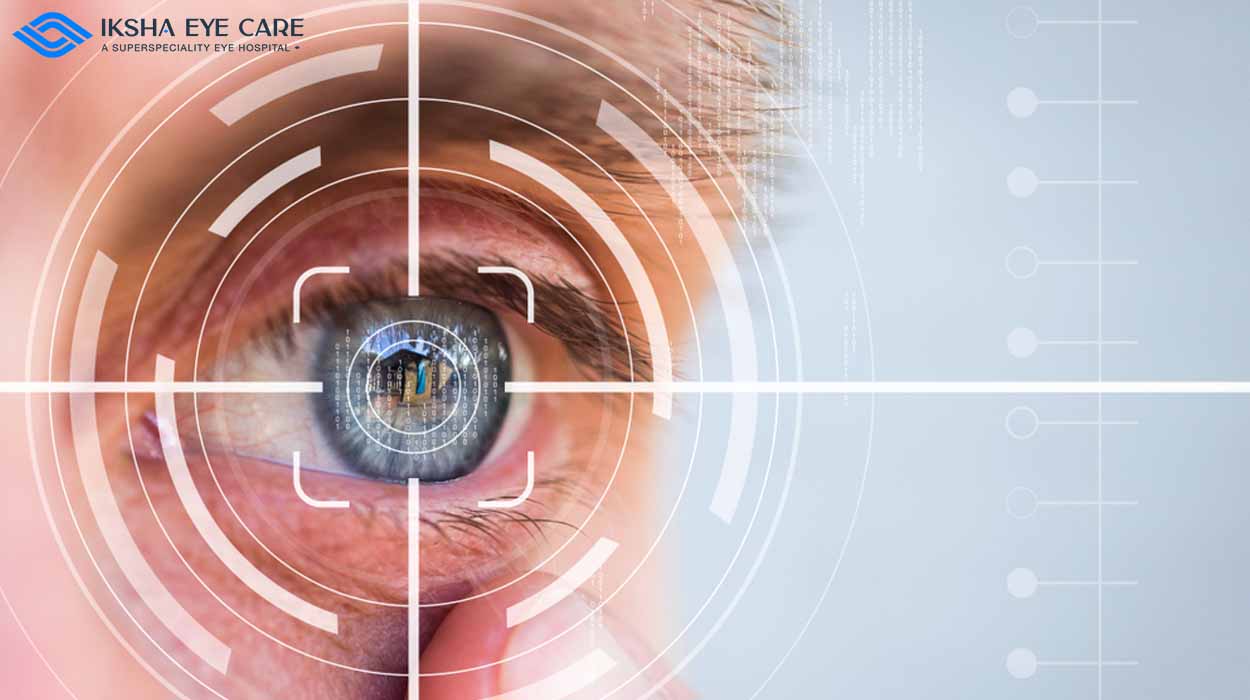Exploring the Cutting-Edge Technologies Utilized for Vision Modification
In the ever-evolving landscape of vision modification modern technologies, a world where advancement and precision assemble, a myriad of advanced developments have actually improved the opportunities for enhancing visual skill. From the detailed world of innovative laser treatments to the realm of man-made knowledge applications and genetics therapy breakthroughs, the field remains to push borders and redefine what was when thought to be unattainable. With each advancement comes the possible to change just how we view and deal with vision-related challenges, using a tantalizing peek right into a future where clearness and precision preponderate.
Advanced Laser Procedures

One more advanced laser procedure gaining popularity is PRK (Photorefractive Keratectomy) This technique entails eliminating the external layer of the cornea before reshaping it with a laser. While the healing time for PRK is longer contrasted to LASIK, it can be a far better option for individuals with slim corneas or various other corneal irregularities. Both LASIK and PRK have high success prices in enhancing vision and are considered risk-free and reputable techniques for vision correction.

Implantable Devices Innovation
Technologies in implantable gadgets are reshaping the landscape of vision improvement, offering new possibilities for people seeking irreversible remedies to refractive mistakes. These sophisticated gadgets, such as phakic intraocular lenses (IOLs) and implantable collamer lenses (ICLs), are made to fix a large range of refractive errors, including myopia, hyperopia, and astigmatism. Unlike standard glasses or call lenses, implantable tools provide an even more long-term option by being placed inside the eye to fix vision.

Wavefront Technology Enhancements
The development of wavefront technology in vision correction has actually changed the precision and personalization of refractive treatments. By utilizing sophisticated wavefront sensors, this technology permits an in-depth evaluation of the eye's special aberrations, making it possible for ophthalmologists to tailor treatments with unmatched accuracy. Wavefront-guided LASIK, for instance, exceeds typical methods by dealing with not only common refractive mistakes like nearsightedness, farsightedness, and astigmatism but additionally higher-order aberrations that can impact visual high quality.
Furthermore, constant innovations in wavefront technology have led to improved diagnostic capabilities, enabling for extra precise pre-operative assessments and post-operative analyses to keep track of the performance of the procedure. In general, these enhancements in wavefront modern technology have significantly contributed to the refinement and effectiveness of vision modification procedures, offering people a greater level of aesthetic skill and quality post-treatment.
Artificial Intelligence Applications
With the progression of wavefront technology in vision correction paving the means for tailored therapies, the integration of fabricated intelligence applications is currently poised to further enhance precision and efficiency in refractive procedures. Artificial knowledge (AI) brings a new level of sophistication to the field by examining large amounts of data to boost decision-making processes during vision correction surgeries. AI algorithms can aid eye doctors in pre-operative planning by predicting the optimum therapy parameters based on individual client information, such as corneal density, refractive mistake, and why not try this out various other appropriate factors. Throughout the surgical procedure, AI can dynamically readjust therapy specifications in real-time, optimizing the accuracy of the improvement. Moreover, post-operative tracking and modification can also take advantage of AI applications, ensuring better outcomes and minimized dangers of difficulties. By leveraging AI in vision modification treatments, eye doctors can supply individuals customized treatments that are not only more precise however also tailored to their distinct visual requirements, eventually leading to improved person contentment and aesthetic results.
Gene Treatment Advancements
Recent improvements in genetics treatment have introduced a brand-new era of accuracy medication, reinventing the landscape of medical therapies. In the realm of vision correction, genetics therapy breakthroughs use promising options for different genetic discover here eye disorders. By targeting certain genetics accountable for conditions like retinitis pigmentosa, Leber genetic amaurosis, and various other hereditary retinal conditions, genetics therapy aims to attend to the source of these problems at a molecular level.
One noteworthy advancement in gene treatment for vision adjustment is Luxturna, accepted by the FDA in 2017. Luxturna is a pioneering genetics therapy treatment for people with inherited retinal diseases brought on by mutations in the RPE65 gene. Through the delivery of a useful copy of the RPE65 gene right into retinal cells, Luxturna has revealed substantial enhancements in vision for patients with these hereditary problems.
As research study in gene therapy remains to advancement, the capacity for tailored treatments for a variety of genetic eye problems expands exponentially, providing wish for boosted vision end results and quality of life for damaged individuals.
Verdict
Finally, the area of vision adjustment is continuously progressing with making use of innovative innovations such as advanced my review here laser treatments, implantable devices, wavefront technology, artificial intelligence, and gene therapy. retina service near me. These technologies have transformed the method vision issues are dealt with, supplying more specific and effective options for people. As innovation proceeds to development, we can anticipate even more developments in the future that will additionally enhance the quality of vision correction treatments